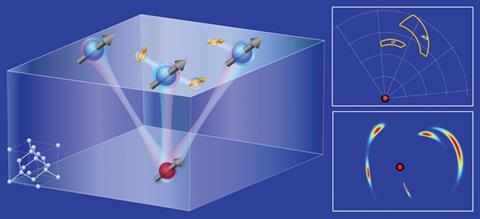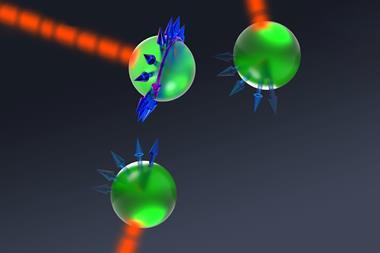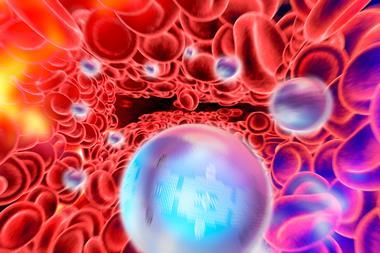Technique can read the spin of a single nucleus opening up a new way to investigate proteins and complex molecules

Researchers in the US have taken magnetic resonance imaging to its extreme by developing a technique to detect the spin of a single nucleus. The work opens the way to carrying out magnetic resonance measurements on single molecules, and providing a method to probe the detailed structure of complex molecules such as proteins for which current techniques are insufficiently sensitive.
It has been known for some time that certain defects in diamond, called nitrogen vacancy (NV) centres, can act as exquisitely sensitive magnetometers. An NV consists of a nitrogen atom substituting for carbon in the diamond lattice, with an associated vacancy or hole in the lattice. The NV possesses an electronic quantum spin state, and emits luminescence. The luminescence is coupled to the spin state, which in turn can be modulated by a magnetic field. So changes in luminescence intensity can be used to monitor changes in the local magnetic field.
However, NV centres reside too far below the diamond surface – around 4nm – to be able to detect the tiny magnetic fluxes caused by a single nucleus on the surface. Now, a team led by Hongkun Park and Mikhail Lukin at Harvard University has overcome this problem by taking advantage of the existence of quantum electron spin states that exist naturally on the surface of diamond. ‘Diamond has surface electron spins that are also sensitive to local magnetic fields,’ says lead author Alex Sushkov. ‘Because these are on the surface, unlike NV, they are able to detect single nuclear spins on the surface of the diamond.’
Crucially, a perturbation of these surface spins can in turn affect the magnetic field of nearby NVs. So these surface spins – termed ‘dark spins’ because they do not luminesce – can act as ‘quantum reporters’ for tiny changes in the magnetic field on the surface.
The Harvard team showed that individual protons on the surface of the diamond can be detected by dark spins, and this information relayed to the NV, which in turn can provide a luminescence read-out. ‘We think it could be possible to use this method to probe the structure of a single molecule sitting on the surface of the diamond, mapping the positions of atoms within the molecule that possess a nuclear spin,’ says Sushkov. This could yield structural information on complex molecules, such as some proteins, which cannot be obtained by current methods such as x-ray diffraction or liquid-state NMR, he says.
Commenting on the study, Malcolm Levitt, an expert on magnetic resonance at the University of Southampton in the UK, says: ‘This scheme extends the range of diamond magnetometry and brings closer the aim of obtaining NMR spectra or even MRI images of small numbers of molecules, well below the detection limit of conventional magnetic resonance technology.’












No comments yet